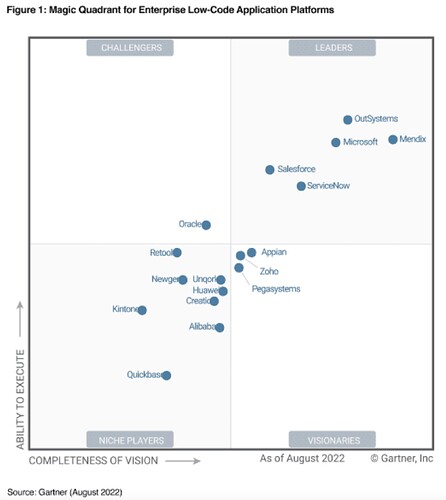Salesforce is a good example for low code. Even if you can program in sf, it offers end users the opportunity to automate workflows first, e.g. a human resources department could create forms, checklists for onboarding, and then create their own reports, etc. all via drag&drop. These can be automated, sent to employees one after the other, or the MA get them displayed in the browser.
As soon as they want more (always) the programmer will come again anyway ;-). But this developer will already have a starting point at least.
IMHO The good low code solutions are currently available on top of excellent business solutions (SAP, SF, ORACLE, etc.), or as standalone solutions on top of interface hubs (which a developer has preconfigured). And some solutions concentrate on AI-supported reports on big data etc.
Except for false promises to new customers, I don’t know why and how Xojo should go low code. That would only work with API0  and with embedded interfaces to the well known cloud service providers or on-prem business solutions.
and with embedded interfaces to the well known cloud service providers or on-prem business solutions.
According to Gartner Low-Code is defined as:
Low code is the evolution of RAD to cloud and SaaS models. Notes: Gartner defines a no-code application platform as an LCAP that only requires text entry for formulae or simple expressions. The LCAP market, therefore, includes no-code platforms.
And they predict (no surprise here either) a growth in this market:
Gartner predicts that by 2026, developers outside formal IT departments will account for at least 80% of the user base for low-code development tools, up from 60% in 2021.
But this is a market segment (business, cloud) which I am not aware of to be Xojo’s targeted audience.
An Enterprise Low-Code Application Platform is an application platform that is used to rapidly develop and deploy custom applications by abstracting and minimizing or replacing the coding needed in development. At a minimum, an LCAP must include: Low-code capabilities (such as a model-driven or graphical programming approach with scripting) to develop a complete application; Support for developing applications consisting of user interfaces, business logic, workflow and data services; Simplified application test, deployment and management.
But there is hope, there is still enough white space left for Xojo to make a difference
